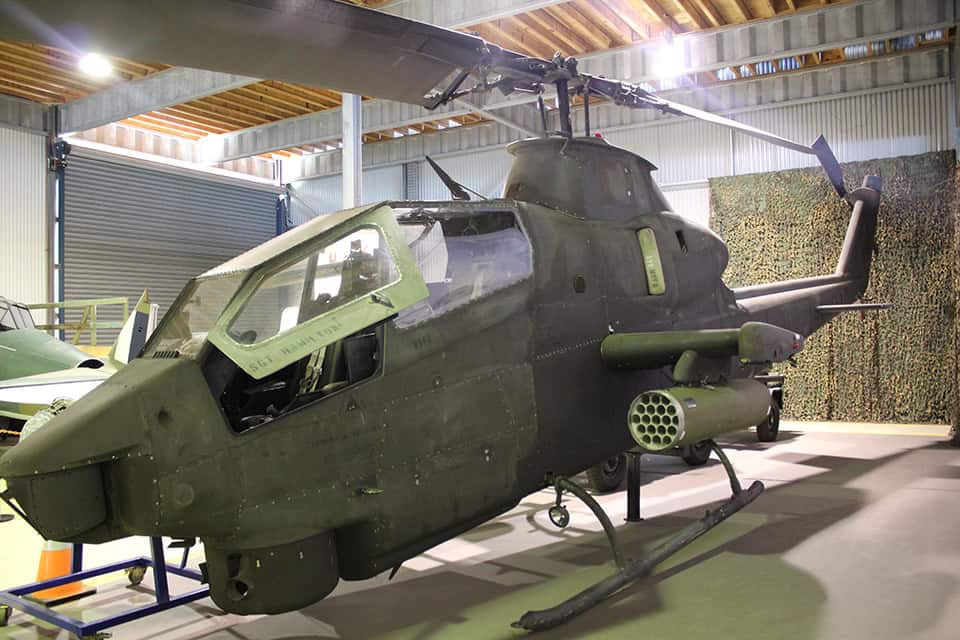Bell AH-1 Huey Cobra

History of US Army 76-22598
The HARS Cobra was built in 1976 as an AH-1S. It was re-designated after 1988 as an AH-1P after fitting of a flat plate canopy, improved instrument and control panel layout, and five infrared lights for night-time operation.
She was built after the Vietnam War, but saw service in the 1st Gulf War.
History of the Type
Designed hastily in the 1960s to fill the US Military’s need in Vietnam for an armed escort and ground attack capability, the Bell Huey Cobra pioneered the rotary gunship concept.
The Bell Helicopter (a division of Textron since 1960) Model 209 evolved from the UH-1 Iroquois (perhaps better known as the “Huey”) troop carrier. Based on Huey dynamics (rotors, drives and power plant) with a new, armour plated fuselage, the Huey Cobra’s maiden flight was on 7th September 1965 – only eight months from the go-ahead from the US Army. Going into combat, in September 1967, as the AH-1G, it has since been enhanced many times.
Vital characteristics include: narrow profile (only 914mm/36in wide), stepped tandem cockpit, comparative light weight, stub wings for stores stations, ability to loiter and manoeuvre to fire its weapons accurately. The Cobra was manufactured at the Fort Worth, Texas headquarters of Bell, however sub-systems acquired from sub-contractors, such as the M28 chin turret came from the St Louis based Emerson Electric.
Weapons could include: 2xM134 Multi-barrel Gatling Guns in chin turret; 2xM189 Grenade launchers in chin turret; a combination of one of each; M200 Rocket launchers on inboard pylons, carrying up to 19 projectiles; TOW Missile launchers on outboard pylons.
Inaugural platform for the launching of TOW missiles (Tube launched, Optically tracked, Wire guided). These were introduced on the AH-1Q, thus not on our display Cobra.
Later models, e.g. AH-1W were twin engined, as specified by US Marines for over water use.
Production of later AH-1Z has continued into the 21st century.
Older versions still fly, mainly as forest fire spotters.
Technical Specifications
Engine: Lycoming T53-L-13 Turboshaft
Maximum takeoff weight: 9,500 lb (4,309 kg)
Length: 13.6 m
Rotor diameter: 13.4 m
Height: 4.12 m
Cruising speed: 200 km/h
Hover ceiling: 12,450 ft
Range: 500 km
Crew: Pilot in rear seat, Co-pilot/Weapons officer in front seat.
